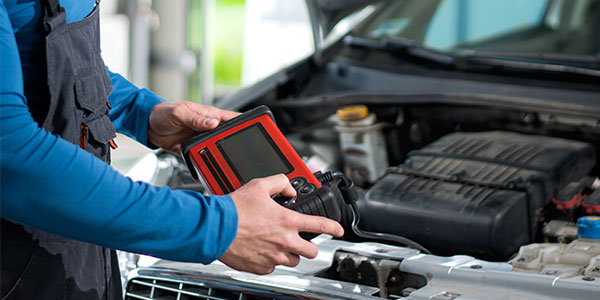
Plug it in, scan for codes, it seems like the same thing over and over again, and when you’ve got one eye on the clock, it’s easy to rush through a few steps to get from point “A” to point “B.” But are you getting the most out of your scan tool?
We’ve all been there. You’re short on time, and the next thing you know the scan tool wants information you don’t have. It’s asking for an engine code, but there are six different ones listed! They’re all 2.0 liters — can they all be that different?
Unfortunately, they can, and to make matters worse, they’re enough alike that no matter which one you choose, the scan tool will still work. The problem is that you may not get all of the data you are looking for and you may not realize it. Just like any modern computers, the software and programming on automotive control units is continuously updated and revised — even during the same model year run of a vehicle. It’s more common than not to have multiple revisions throughout the course of a year. The smallest of revisions, from additional sensors, to modified fuel and ignition maps, to tightening emission regulations, can mean the difference between a correct or missed diagnosis. Your scanner needs to know exactly what it is looking for. The same advice holds true for all control units — Engine, Transmission, ABS, Airbag, Body — the programming is very specific.
Unfortunately, many auto manufacturers don’t make it very easy for us to find this information, but taking the time to look it up and figure it out will pay off in the long run. This information is all buried somewhere, and here’s a list of some of the different sources that can hold the “key” to letting your scanner know what it needs:
- The VIN
- Production Date
- Service Codes
- Model Codes
- Sales Type
- Engine Codes or
- Transmission Codes
Some are in obvious locations, but the most common places to find the more illusive ones are glove box labels and trunk labels (near the spare tire or jack), and sometimes the labels reside in the owner’s manual. It may come down to locating codes stamped into engine blocks or transmission cases, or stamped directly on a control unit.
Fortunately, with the internet, there’s almost always someone who’s already had to find these codes, and you can probably look it up and find them pretty easily. When your scanner asks for it, take the time and find the correct codes. You’ll not only realize the immediate benefits, but over time you’ll get used to what is where on what type of car and getting the most out of your scan tool will be a regular part of your day.
Coding: Scan Tool Tips & Tricks
Looking for some more neat scan tool tips and tricks? Have you ever tried to do any coding? Although you may not be able to currently do this on every make and model, it’s becoming more and more common.
What we are talking about is actually changing the factory binary codes — the bits and bytes — that auto manufacturers use to enable or disable different options within certain control units. There are a number of reasons you may want to do this, from installing aftermarket accessories to enabling factory options. It can help you with unusual diagnostics as well.
Factory Options
Auto manufacturers have always made their cars so they don’t have to do too many things twice. In the old days, for example, you might buy a car with single exhaust, but the mounting holes and brackets are still on the frame for dual exhaust, you just didn’t check that option. New cars are the same way, only in the electronic sense.
Any given control unit has the ability to do many of the functions that it doesn’t do, simply because it was not coded to do them.
For example, you may be able to change the door locks to unlock all at once instead of just one, or make all of the windows go down by holding the key in the unlock position. You may be able to change turn signal and lane change features, or even enable a hatch release button. This can all be pretty fun, and also very profitable! You may have already had customers ask about this.
Aftermarket Accessories
Modifications, both cosmetic and performance, are as popular as they have always been, and to run with the current crowd of enthusiasts, you’ll need to become familiar with coding.
Many aftermarket accessories rely on coding changes to work correctly, and you’ll start to see the requests for this more and more often.
Diagnostics
Another important factor to consider is that there are many inexpensive hand-held scanners that can perform these coding procedures. Many people are trying their hand at this coding, and in some cases throwing caution to the wind. You may very well get a car in your shop that has been coded incorrectly, then changed hands and the current owner has no idea of its history.
If you have a strange problem, don’t forget to look at the coding, it could be an easier fix than you think!
Coding is here to stay. Get familiar with it now and it’ll pay off in the long run!
Article courtesy TechShop.













